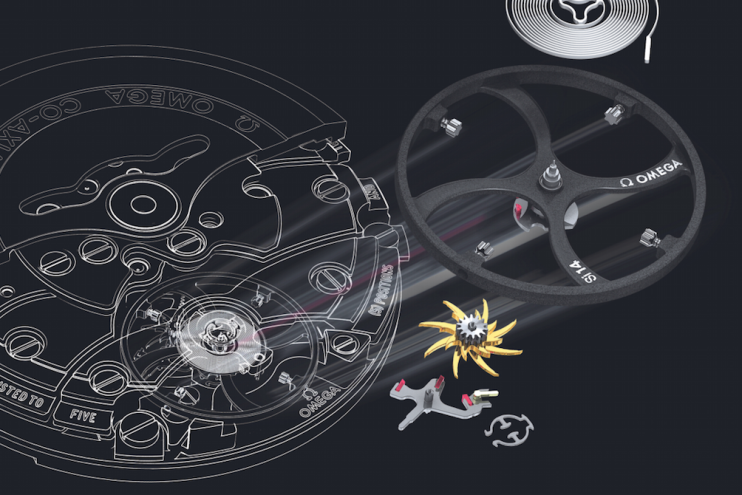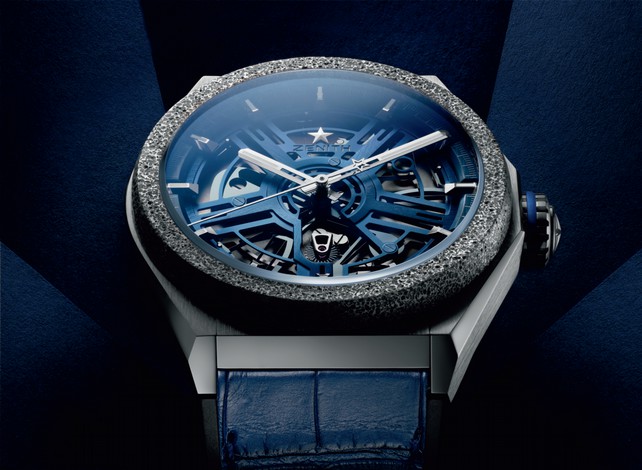A mechanical wristwatch may be based on 19th-century principles – but that doesn’t mean it’s immune to innovation

The idea of “new technology” in Swiss watchmaking seems rather oxymoronic – especially when you consider how much stock this rose-tinted industry places in heritage and hand craftsmanship. But as mechanical watches have reasserted themselves in recent decades, after near-decimation at the hands of quartz technology back in the 70s, the more forward-minded brands are distinguishing themselves from the competition beyond their glossy ad campaigns. In the process, they’re proving that a spring-powered concoction of levers and cogs needn’t serve solely as an over-engineered status symbol.
To be fair, recent progress has largely been pre-occupied with miniaturising 19th-century pocket-watch mechanisms to wrist proportions. Not until 1999, when Omega adopted George Daniels’ revolutionary, friction-free ‘Co-Axial’ escapement wholesale, then 2001 when Ulysse Nardin produced a version of its ‘Freak’ spiked with mono-crystalline silicon, had any maker stepped beyond its comfort zone and attempted to make a better watch.
“Better?” you may ask. What could possibly make a mechanical watch ‘better’ than an electronic quartz watch, when five grand has next-to-never a chance of buying you something as precise as a +/-10-seconds-a-year, twenty-quid Casio? But it’s not precision we’re talking here – after all, most of us are still perfectly fine with our Rolex Submariner’s +/-2 seconds a day. Instead, we refer you to the godfather of modern horology, Abraham-Louis Breguet: “Show me the perfect oil and I’ll show you the perfect watch,” goes his famous adage.
In other words, show me a watch that’ll tick on and on, without needing to clean and refresh its gunky, dried-out lubricants every five years. A watch that, despite its primitive clockwork, will outlive every cheapo quartz battery or every smartwatch software platform; always repairable in capable, tweezer-wielding hands and never obsolete.
Breguet was lamenting a lack of perfect oil (watchmaker’s oil is rumoured to be the second most expensive liquid in the world after the ‘heavy’ isotope of water used in nuclear power reactors). But thanks to technology never available in Breguet’s day, the 21st century’s watchmakers are going one better: they’re removing the oil entirely. Thanks to the prevalence of other forms of ‘personal tech’ that never existed in his day, they’re also battling a new threat to a wristwatch’s delicate mechanics: magnetism.
Dr Daniels’ and Omega’s Co-Axial escapement of 1999 is an ingenious solution to those irksome five-year services, where nothing at the movement’s beating heart slides against itself; things are instead ‘nudged’ along, tick for the tock for the tick. But even Omega had to concede that Ulysse Nardin was onto something in 2001 with its weapon of choice: silicon. Both frictionless and anti-magnetic, silicon has proved to be modern horology’s silver bullet. And 18 years on, it’s being adopted wholesale, from the entry-level luxury of Tissot up to Abraham-Louis’ modern incarnation. In fact, it was Breguet who led the mainstream silicon revolution back in 2006, in alliance with Patek Philippe and Rolex, all drawing on the resources of Neuchâtel’s Centre of Swiss Electronics and Microtechnology.

In collectively honing the process of ‘deep reactive ion etching’ a silicon wafer, something like the escapement’s tiny, rocking anchor lever can be produced in hundred-strong batches, to tolerances less than a third of a hair’s width, without the need for lubrication, plus it’s immune to the magnetism of your MacBook. Needless to say, silicon has since become a mainstay of modern horology – as proved by Patek’s ‘Advanced Research’ ref. 5550P perpetual calendar of 2012, Breguet’s now-ubiquitous silicon balance spring, and Omega’s ‘Master’ calibres, which boast service intervals of 10 years, a warranty of five years and certification by Switzerland’s Federal Office of Metrology in resisting magnetic fields of 15,000 Gauss (a session in an MRI scanner, say).
Rolex’s adventures in silicon remain under wraps for now, but we do know it’s working with another anti-magnetic technology, coating its metal-alloy balance springs with so-called ‘Parachrom’. When you’re producing more than a million high-precision mechanicals a year, economies of scale and quality control take governance over experimental tech. That might sound like playing it safe, but Rolex’s constant, incremental gains have made it the watchmaker it is. If you’re venturing to the summit of Everest, there’s no more reliable timekeeper to have by your side.
Making things out of mono-crystalline silicon wafers is no trivial undertaking, either. The clean suits and sci-fi laboratories may be at odds with the quaint vision of mountain-dwelling watchmakers hunched in chalet ateliers, but they share the same pursuit of precision. You might think of watch components as tiny, but the traditional metal ones are much heavier than they need to be, because they have to withstand the rigours of the manufacturing process. Cutting-tools in lathes and milling machines, however sharp, tear at the metal, hacking it off bit by bit, albeit on a microscopic scale. In contrast, plasma etching a silicon wafer simply vaporises the atoms, placing no stress on the material being shaped, so that very thin, light, components can be made in any shape you can draw.
Purists balked at first. But time has proven that silicon implants are by no means the emperor’s new clothes. As well as an intellectual exercise in itself – tantamount to the art of fine-finishing, which can add as much as 40 per cent to the value of a painstakingly hand-polished ‘haute horlogerie’ movement – the European industry has realised that there is no reason why the Far East cannot produce top-quality mechanical watches of their own, not to mention buy them. In building a wave of patentable new technologies, Switzerland is maintaining an edge and upholding its reputation as the world’s leading horological community. In other words, staving off another ‘Quartz Crisis’, when the Far East’s affordable new tech caught the Swiss napping.
It has taken hold beyond the escapement too, beyond all expectations. Far from simply replacing steel or brass components like for like, the limitless forms and flexibility of silicon have opened a treasure chest of 21st-century possibilities. Essentially, the wholesale replacement of multi-component mechanisms with monolithic silicon constructs – 2D tendril frameworks that twitch, pulse and flex in consistent, resistant and ultimately, low-maintenance fashion.
Girard-Perregaux was one of the first to take advantage of this versatility and finally realise a concept that has lurked in a designer’s drawer for decades – a concept that until now was impossible using conventional materials. Five years in development, the Constant Girard-Perregaux constant-force escapement – a punning tribute to brand co-founder Constant Girard – mounts a dual-escape-wheel escapement within a butterfly-shaped silicon frame, bisected by a blade thinner than a human hair. The butterfly’s wings are pinched slightly, so the blade is buckled into a lazy S-shape (silicon’s elasticity being an advantage in this case).
As the blade buckles back and forth, a packet of energy less than one millijoule is fed into the oscillating balance. Likened to a micro-capacitor, the blade stores and releases the energy at a constant rate regardless of the power supply, which varies as the winding barrel unwinds. All dreamt-up by one of Girard-Perregaux’ engineers on a lengthy rail journey, while absent-mindedly flexing his train ticket between index finger and thumb.
Ultimate silicon bragging rights (for 2019 at least) go back to Ulysse Nardin, whose ‘Freak Next’ sandwiches not one but four floating silicon oscillators, eliminating any need for axial attachment, let alone lubricating it in the first place. Ticking elsewhere is niche wild card, Zenith, with something arguably even more ambitious.
If its far-out ‘Defy LAB’ concept of 2017 seemed far-fetched, then the thinking man’s Swiss maison has truly – ahem – defied the naysayers by bringing a working product to market in less than two years – for just £15,500.
The renamed ‘Inventor’ does away entirely with the traditional, tick-tick-ticking assembly of balance wheel, hairspring and lever escapement, replacing its concoction of 30 parts with just one: a single wafer of silicon, stencilled into Kandinsky abstractness. It ‘twitches’ at 15Hz bringing the whole, openworked dial display to life, measuring an error of just one second across 70 hours’ autonomy.
Nothing else mechanical comes close to that. For now. Whether silicon continues to be the future for watchmaking or some other micro-engineered alchemy steals a march, we can be confident that your next purchase from Watches of Switzerland will be far from nostalgic, let alone indulgent.